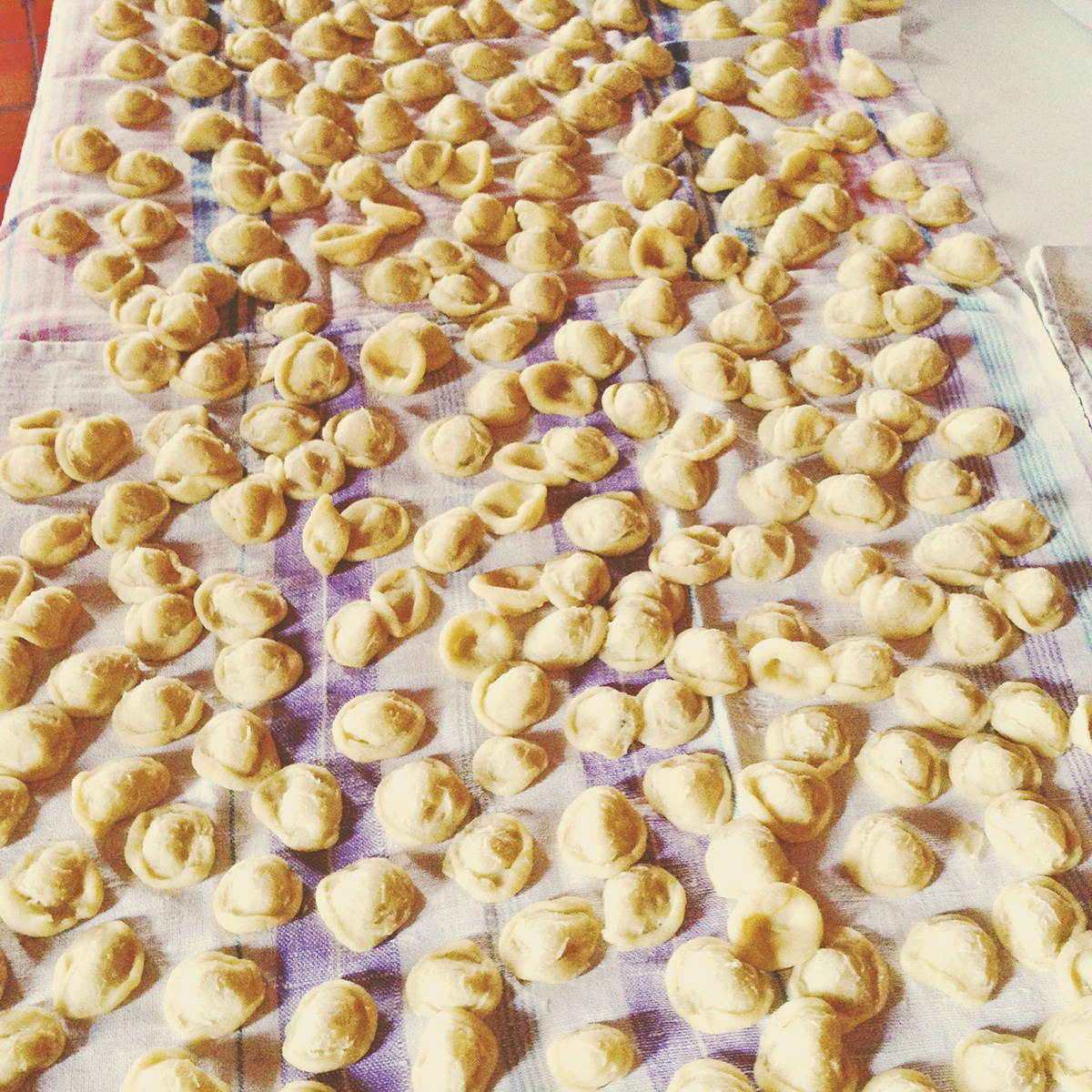The 5 best recipes
from Puglia

First of all, the Frisa
Though extra virgin olive oil is omnipresent in the local gastronomy, the cereal grains also have an important place in traditional food. Bread is produced from this cereal and it is idolized and viewed as miraculous in Puglia, in its various shapes and gradings that can reach up to 15 kilograms. The Frisa, in its many different recipes and “terminologies” (fresedde in Bari, fresella in the Foggia area and frisedda in Salento), is therefore produced in a land in which bakery products have very different values. This small sandwich cut in half before being toasted was once produced using only spelt flour. Today the most appreciated flours are from wholegrain, although it is not hard to find more contemporary versions with the addition of spices such as turmeric, chilli or various seeds. The talent of the Salento people has been to transform the poor person’s food into a “must-have” fresh dish for appetizers. In addition to the classic tomato, oil and salt, some restaurants have produced genuine menus based on the Frise.

His majesty, the panzerotto.
A classic of Apulian gastronomy. It is composed of a raised dough “turnover” filled with tomato and mozzarella and fried in hot oil. Like the Frisa, even the Panzerotto can be considered a sort of appetizer, ideal at all hours of the day. Usually it is fried and eaten piping hot to bring out its fragrance and flavour. It’s truly the fast-food of southern Italy.

Puglia seafood recipes
With about 800 kilometres of coastline, Puglia is like a peninsula in the peninsula. Although the classic recipes of the Apulian cuisine mostly include inland products, seafoods are a staple in the recipes of the great seaside cities. Taranto, for example, is the queen of mussel cultivation, in particular the black mussels. The “Mar Piccolo” in Taranto is entirely dedicated to the cultivation and improvement of this mussel, which is the main element in the famous tiella soup. Mussel soup has various names such as “fafueche”, “puppetegne” and “scallatedde” among others, but they all resemble each other in both the ingredients and the preparation. The mussels are opened in a pan set over the stove, and only oil, garlic, chilli and parsley are added. The sauce forms a broth in which homemade bread is dipped.

The Tiella: rice, potatoes and mussels (ris, patan e cozz)
There are several variations which depend on the city of the recipe’s origin. Although Taranto claims its fatherhood, the one from Bari can be defined as the “mother” of all recipes as it is made with, and here is the substantial difference…zucchini…along with the usual potatoes. The first difficulty in executing this recipe lies in having to traditionally open the mussels by hand using a special knife and making an incision so that the mussel remains fully intact, in one half shell. It is therefore possible, and certainly fitting, to retain the liquid that comes out, preserving the delicious aroma of the sea typical of this mussel. One then proceeds in layers, alternating vegetables with mussels and uncooked rice, seasoning it all with a sprinkling of pecorino, parsley and onion. The second big difficulty lies in the measurement of the water (mixed with the mussel juices) which is added to the tiella and which is then used to cook the ingredients, the rice first and foremost. The rice at the end must be cooked to perfection and the tiella must be neither too dry nor too brothy.

Orecchiette,
the recipe of the typical Apulian pasta
The icon and queen of Apulian pasta is the orecchietta, which requires experience, skill and practice to prepare. There are now many cooking classes which are offered to tourists, teaching them how to create this type of pasta. Yet despite all their fame, they are only made from water, flour and durum wheat semolina which are combined to form a dough. This dough is then shaped into small cylinders from which these small “conchigliette” or orecchiette are then made by the use of a knife and a skillful pair of hands. They can be large like the Ostuni staccjiodd, or small, like those from Bari. If the piece of dough is left open, after having been “dragged” out (strascinato in Italian) with the knife on the chopping board, you will be left with the typical Fasano strascinato and Brindisi. Although there are many ways to prepare the orecchiette, the most famous include turnip greens, a vegetable of the broccoli family but more similar to the Neapolitan “friariello”, cultivated in Puglia only during the coldest months.
